As a designer, Laura May Gibbs has that most enviable of talents, spending her days re-interpreting the world around her into her often offbeat and experimental pieces.
It’s a skill that has seen her create ranges for some of Australia’s most prominent brands and work alongside global heavyweights such as Alexander Wang.
But it’s with her newest endeavor, nagnAta, that’s she’s most hands on.
Dedicated yogis will need no introduction to her colourful hand-woven mats, bags and scarves – they’re already in cult demand.
For the uninitiated?
The nagnAta world is one of vibrancy, bohemian spirit and a celebration of sustainable design. It sees Gibbs regularly travel between India and Afghanistan to collaborate with local weavers for the most ethically created pieces possible.
Here, she shares with CITIZENS OF THE WORLD some of the most meaningful places she’s visited in India and why you need to go there and experience it all for yourself

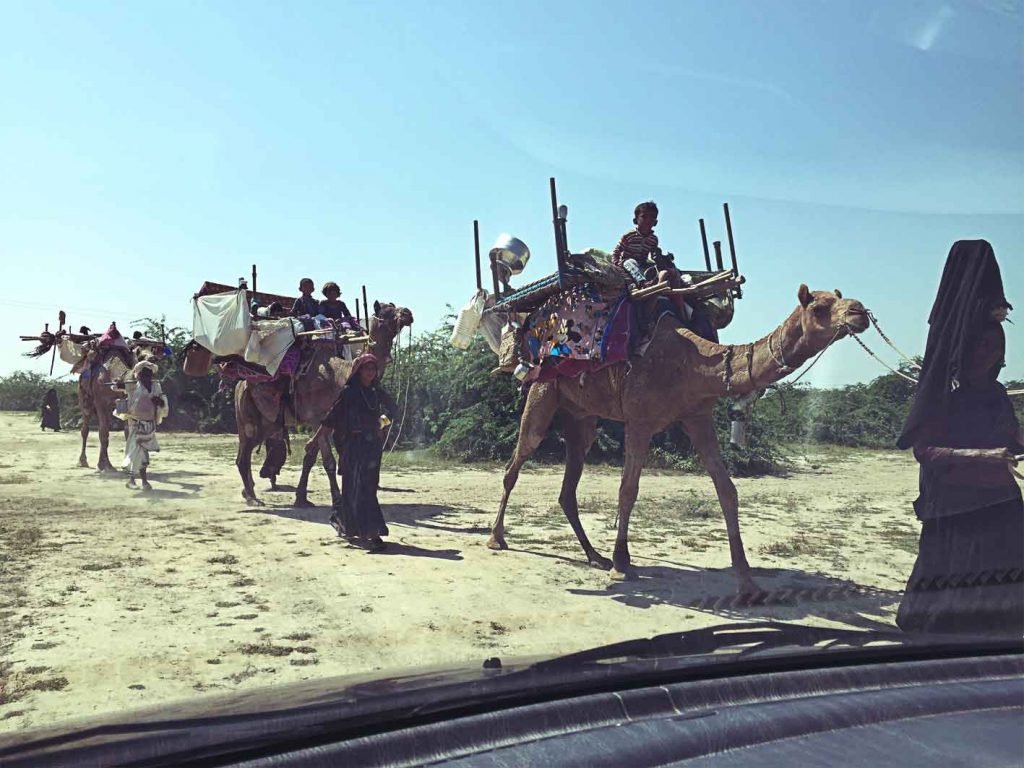
Rann Of Kutch, Gujarat
Sitting with primitive tribes in the Kutch desert is one of my most memorable experiences. While staying in Bhuj, we ventured north into the Rann of Kutch visiting remote villages of the Paehan, Marwada Harijan and Dhaneta Jat tribes.
The ‘Rann of Kutch’ is the largest salt desert in the world and the name ‘Rann’ comes from the Hindi word ‘ran’ meaning desert. Kutchi people inhabit the desert and as we drove down desolate tracks we passed herders, camel breeders and nomadic Rabari tribes travelling on camelback.
Meeting the Dhaneta Jat tribe was incredible as they are relatively untouched by the western world. Most of the children had never seen a white person. One young boy screamed in terror when he saw us dressed in traditional clothes that the elders insisted we wear. Everyone laughed, and despite the language barrier there was a mutual acknowledgement of the rarity of this meeting. Our guide Kuldip formed a relationship with the Jat tribe helping rebuild their village after the 2001 earthquake. He didn’t know for certain what their response would be when we arrived, as they’re very private and primitive people and wary of westerners.
Thankfully, we were welcomed and ushered into a mud hut where we sat with a growing number of the tribe. We eventually had about 40 Jat natives staring at us, and us back at them. I was in admiration of the way they looked, their adornment of heavy jewels, nose rings the size of a fist, and the work in their hand-embroidered clothing was incredible. It was a powerful experience for us; these women and their ancestors are the women that embroider the textiles we source and use in our nagnAta pieces.
We ended the day driving across barren desert in search of the Banni grasslands, a belt of desert vegetation rich in wildlife and biodiversity. We followed the white painted stones left on the ground as markings, and after a few wrong leads we reached the grasslands at sunset. Banni grasslands are a breathtaking sight against the setting sun, a moment of vast solitude to reflect on our desert experience.
* To respect the sacredness of the tribes I didn’t take photographs inside the villages.


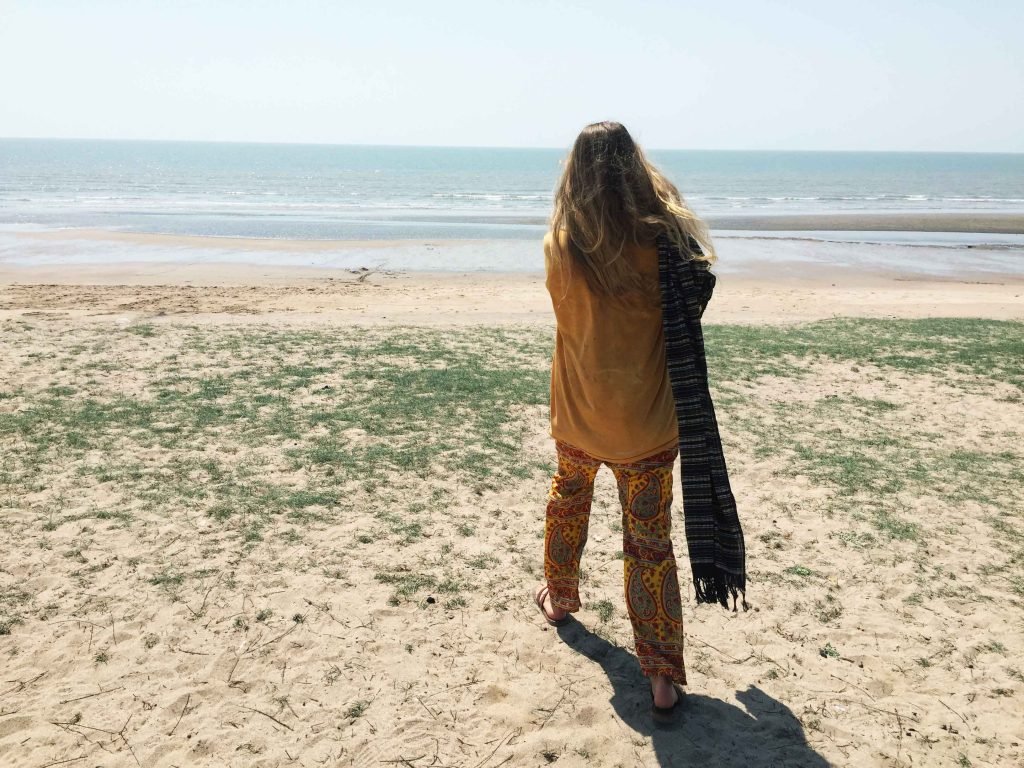
Bhuj, Kutch District, Gujarat
Bhuj is a desert town in the Kutch region of Gujarat. We were drawn to Kutch for its rich culture. A great range of ethnic communities still live in the region, maintaining their traditional dress and crafts, like those we visited in the desert. While in Bhuj my sister and I met with master artisans of weaving, block printing, dyeing, bandhani (tie-dye) and embroidery, and sourced textiles for our new collection.
I became fascinated with the Rabari women. Traditionally Rabari’s were nomadic tribes roaming the desert and plains by camel, sleeping in tents or under the open skies. The men are herders while the women dedicate long hours to their artistically distinctive style of embroidery and mirror work. The word ‘Rabari’ translates to ‘outsiders’, ‘the one that has gone outside’ or ‘dwells outside’. These wandering women of the desert exude strength unlike any other group of native Indian women I’ve met. They practice tattooing and almost all surfaces of their bodies are covered in traditional patterns passed down through generations. We commissioned two Rabari women to do some embroidery work for us, which was an inspiring and special process.
On our last day in Bhuj, we drove an hour to Mandvi Beach on the Gulf Of Kutch to try and find solace from the desert heat and satisfy my ocean withdrawals. The water was hot and the sand burnt our feet. The local Indians began taking photos of us, apparently it was crazy to want to swim in this heat, let alone be wearing a bikini out in the desert sun. We ended up eating dahl by a nearby resort pool.
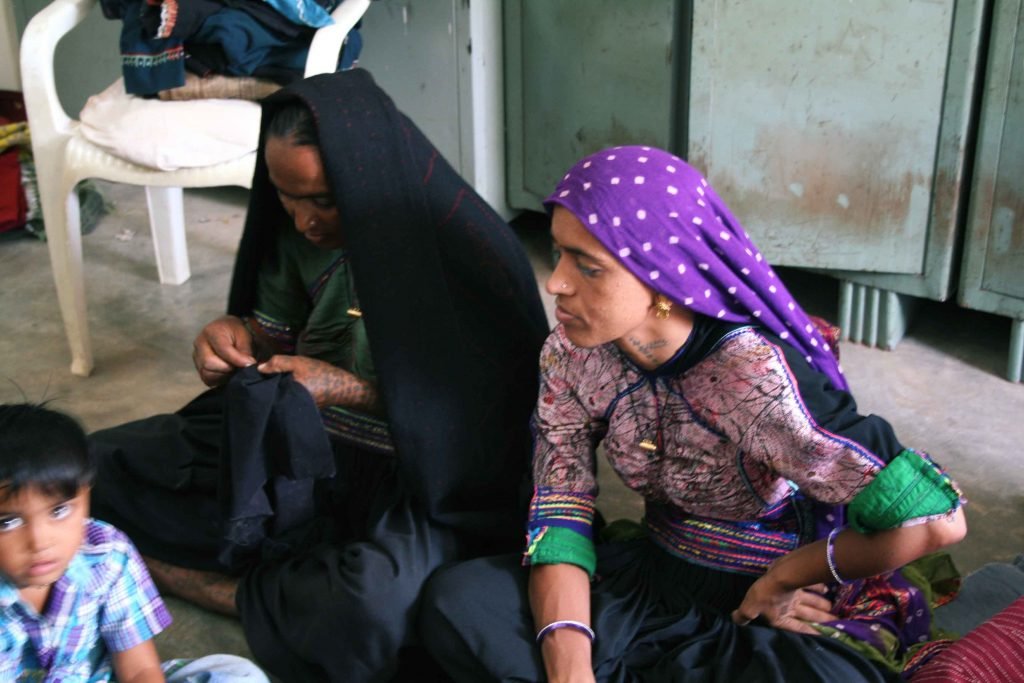
The Pink City, (The Old City), Jaipur
I spend a lot of time working in The Pink City, also known as The Old City, as this is where our makers and artisans reside. The walls of the city are painted a dusty terracotta shade and each time I enter through the gates of the Old City I feel like I’ve stepped back in time. The streets are bustling and vibrant with an abundance of lanes to explore. It has a chaotic charm and by day it can be crowded and overwhelming, by night the streets exude a certain romance. The evening light creates a warm peachy glow against the pink walls and people light ceremonial offerings and make music in the streets.
Some days walking to work, we pass a painted elephant. There are always lots of animals and people sprawled out on the curbs selling food and crafts. There’s an old-meets-new-world feel to this city, as the traditional handcraft industry is rich, as is modern business and trade. I enjoy creating in this city as I feel anything is possible. But after a week, I’m always ready to escape to somewhere less hectic, then return with a fresh mind to check up on our work later in the trip.


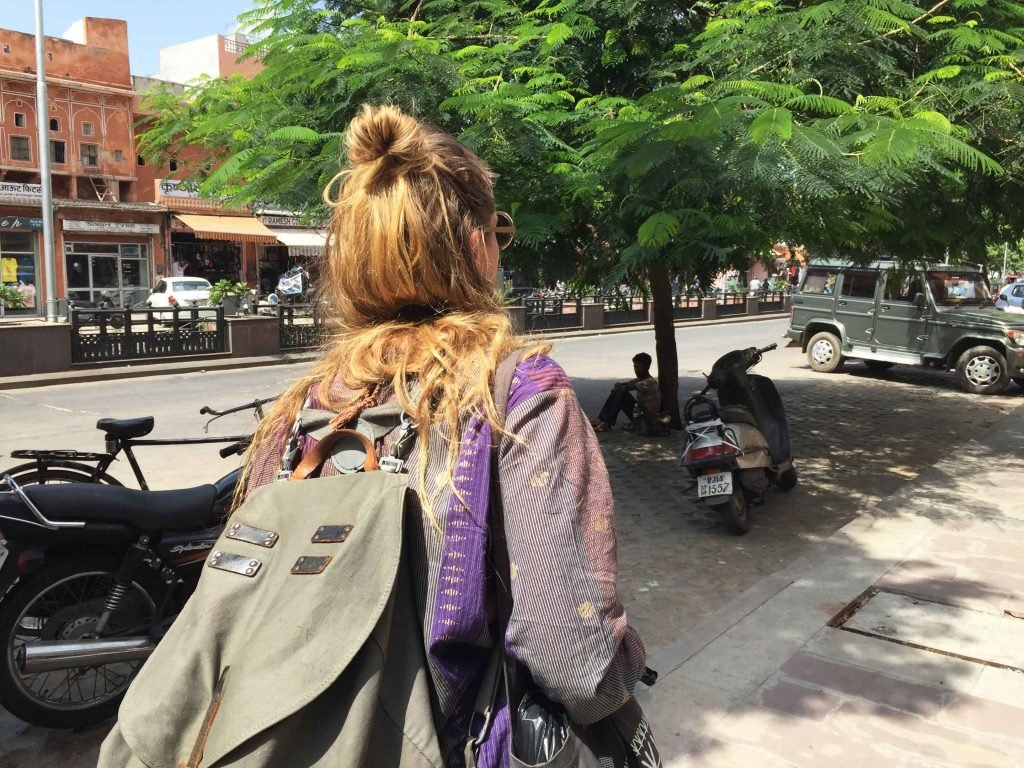


AVANI Sustainable Community, Kumaon, Uttarakhand
Avani is a sustainable community nestled in the Kumaon region of the Himalayan state of Uttarakhand. The journey to Avani was a long one from Delhi. We took an overnight train, and then drove for six hours through winding mountainous terrain, while trying to hold down my carsickness. The travel was worth it; luscious mountain landscape and a special community built upon the principles of sustainability and local empowerment awaited us.
The name “Avani” comes from the Hindi word for Earth. My sister and I spent a week living in the community dorms, learning more about Avani’s environmental conservation work and training with their natural dyeing team. Avani has an innovative bio-energy program based around solar and pine needle energy. Locals gather the pine needles and other materials from the forest floor and deliver them to the pine-needle-fueled power station based on the campus.
My time here felt familiar to my experiences of ashram life in India. It was peaceful, slow moving, and each day we became more conscious of the implications of our actions.
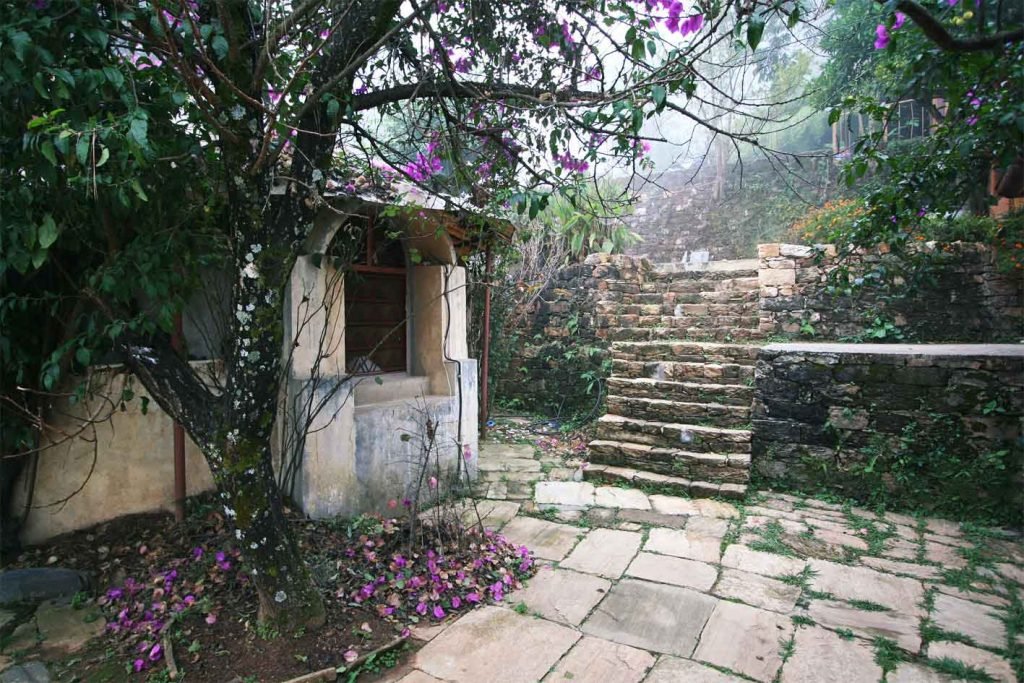
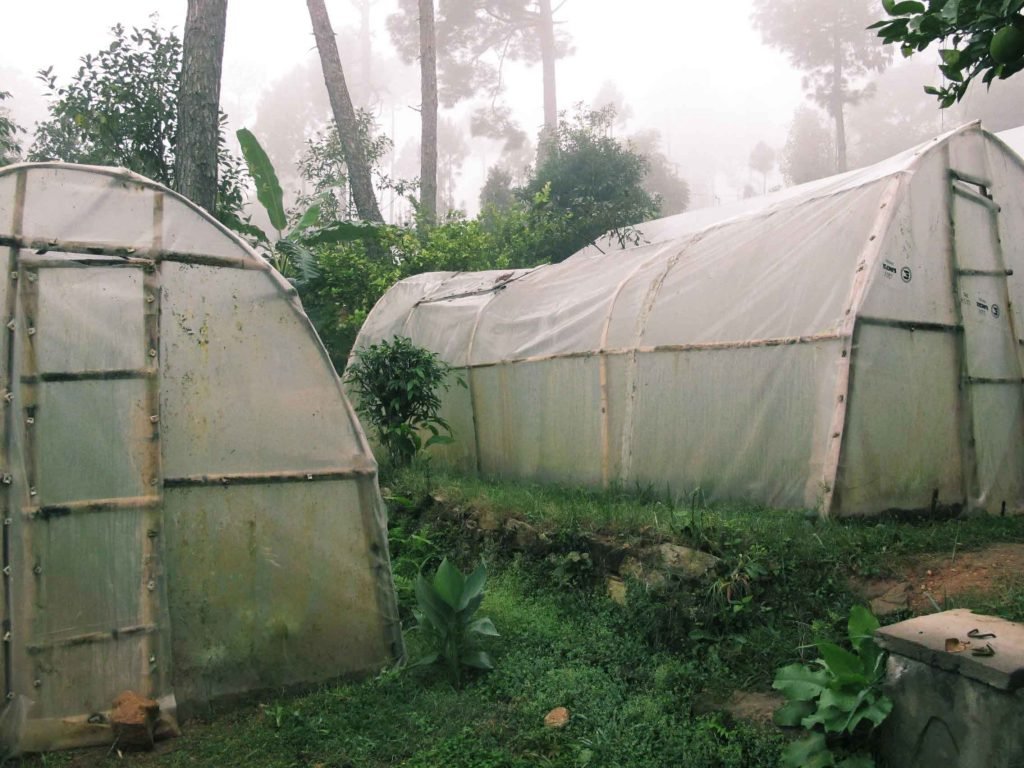

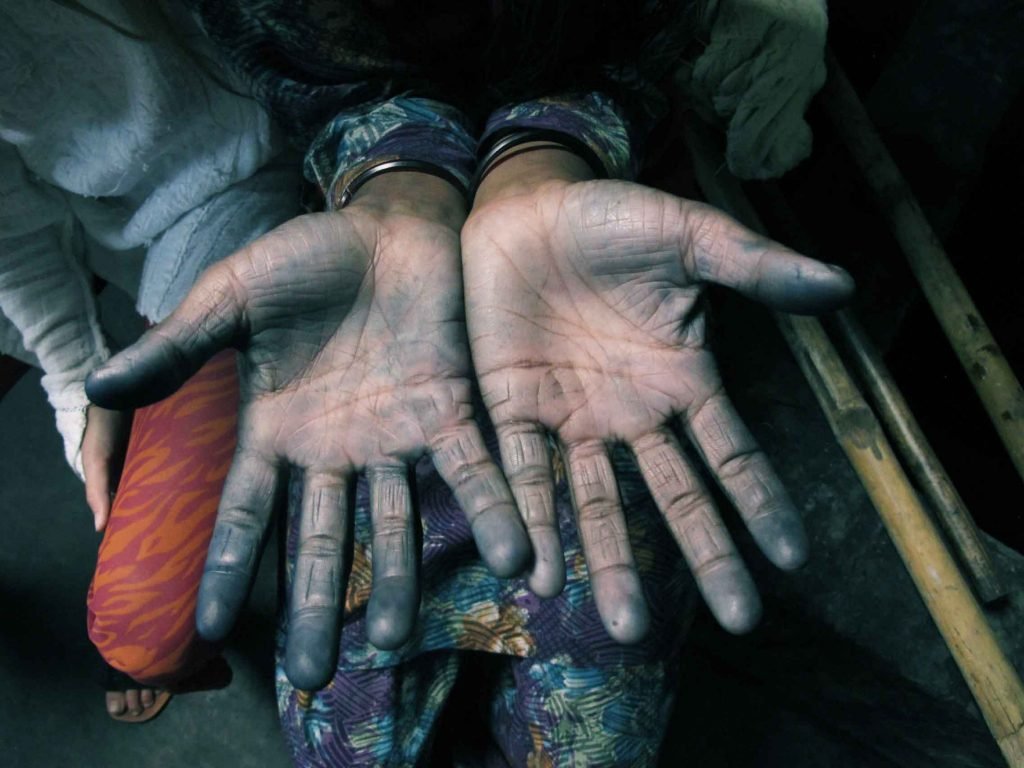
Women Weave, Maheshwar, Madhya Pradesh
Maheshwar is a peaceful town on the bank of the holy Narmada River. I visited here a year ago to meet with a handloom weaving initiative, Women Weave. We worked together on a range of organic cotton and naturally dyed handloom woven scarves, and also spent time with students from The Handloom School, a program founded by Women Weave to educate and train youths in rural villages.
I’d been sick around this time with a bout of the unrelenting Indian travel tummy. I remember walking the ghats early morning on our first day there to get some fresh air and a sense for where I was. I was mesmerised by the hundreds of women, children and some men bathing in the ghats. It was a vibrant sight of sarees laid out to dry in the morning sun. Women were huddled together bathing and partaking in rituals, and children were laughing and swimming. There were no other westerners in sight. It was a really tranquil experience. There is a spiritual richness to the community’s morning bathing rituals. I felt this even more so than my experiences in Varanasi, where the ghats were full of tourists and you’re hassled walking around.a
Maheshwar felt to me, more of an unaffected glimpse into traditional Indian life. I later discovered the name ‘Maheshwar’ came from the great Lord Shiva, which literally meant to be the abode of Shiva. And sadhus and yatris (pilgrims) are drawn to the ghats and holy temples on the Narmada River.
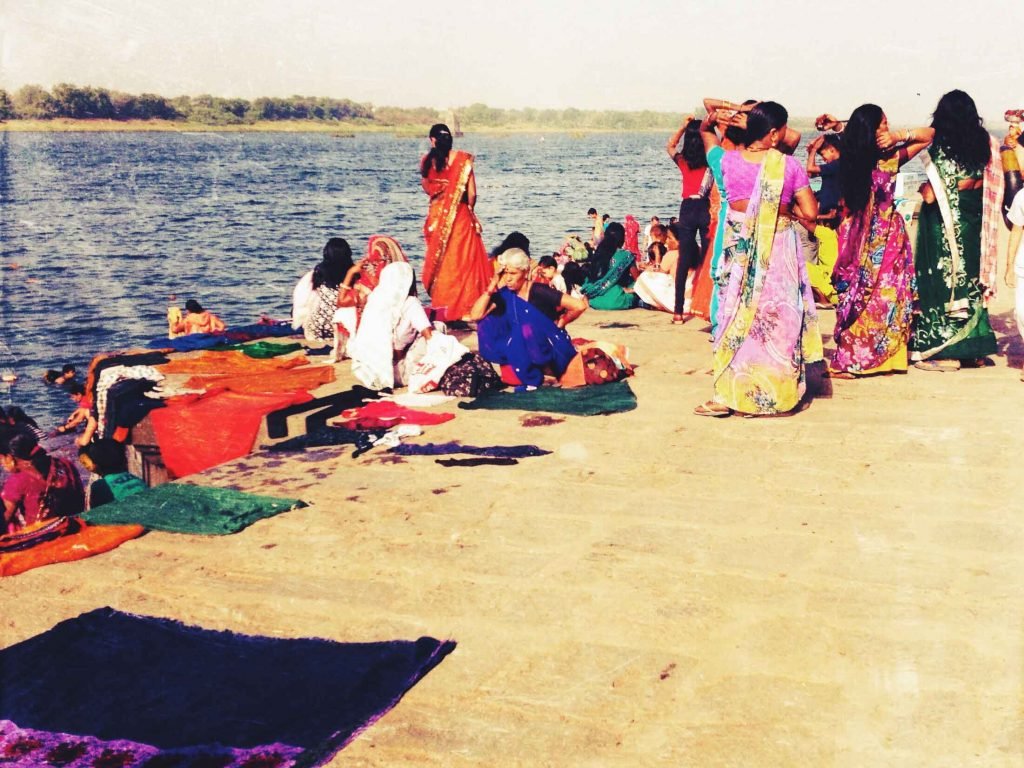


Visit nagnAta to find out more about Laura May Gibbs’ work with Women Weave.
You can also follow nagnAta on Instagram @nagnata_
We’re also on Instagram @citizensoftheworld
